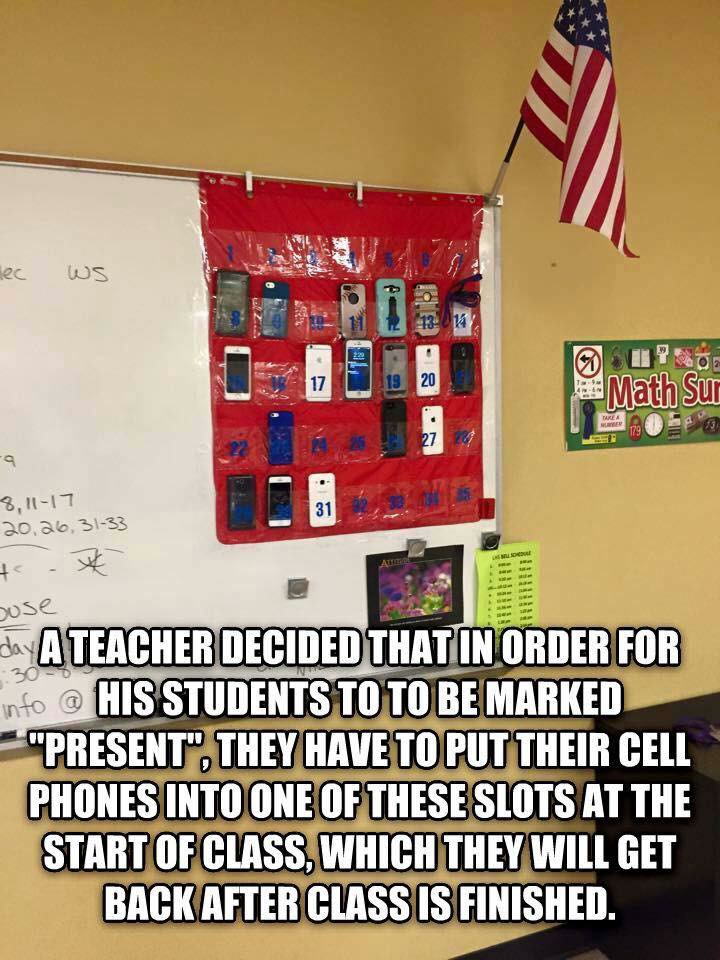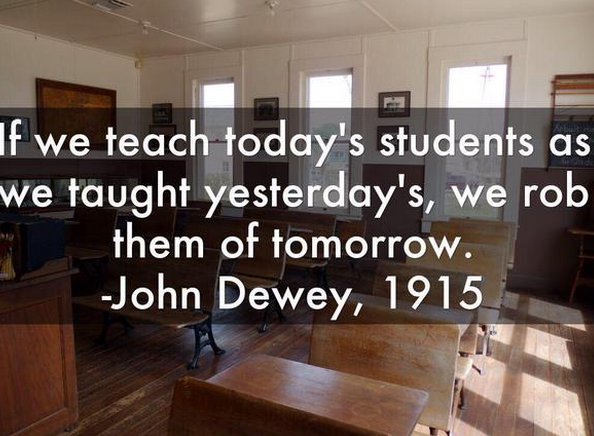I was in a meeting recently with executives from a large corporation. As we discussed the intersections between learning in K-12 schools, universities and the corporate world, it was noted that everyone brings a mobile device to work and throughout the day use multiple devices to work, learn and communicate. The same is true for most learners in college. With this future ahead of our K-12 students, how are we preparing learners for this world of work and opportunities for learning at their fingertips if we are still requiring students to check their devices at the door?

I have seen this image shared on Facebook as a “brilliant idea”. As fellow parents and educators are advocating for devices to be checked in or powered off, I’m wondering how many of us as adults would be able to function without our handheld devices throughout the day.
I don’t know a teacher or parent that doesn’t want to see students thrive in their current setting and be prepared to be competitive in both their local and global communities. Event though we say we want this, too often we get stuck in the way we learned rather than focusing on the amazing opportunities that learners have today. For those who think about students being distracted and needing to learn the way we did, I would ask you to consider what opportunities we might be missing out on. If students have access to mobile devices that can connect them with the world, how might we use this to our advantage? Are we favoring curriculum that is static because it is truly the best way or is it that it’s comfortable for us (the adults) because it’s the the way we have always done it.

The resources we have for learning have changed and students are accessing them outside of school to create, communicate, learn and so much more. There are many educators who are asking how they can bring these tools into their classrooms and create learning experiences that empower students to effectively and ethically use their devices rather than ban them.
Just to be clear, I’m not advocating for kids to text and play games on their cell phones all day when they are bored in class or need a break. Instead, I’m asking that we think about how we can incorporate these devices into learning experiences that allow learners to engage with content, experts, and peers in class, next door and around the world in ways that were never possible without the technology we have access to today.
Instead of checking devices at the door, let’s think about how we might use them instead to set students up for success in the world they live in. Here are some things that I look for to assess authentic learning with technology in classrooms:
- Finding and solving authentic problems to improve existing circumstances
- Conducting research to understand diverse perspectives
- Developing knowledge, skills, and mindsets that will set them up for success today and in the future
- Creating new knowledge and content based on what they have learned
- Collaborating with others to learn, share and deepen thinking
- Communicating ideas in a variety of ways
- Setting goals and engaging in personalized learning experiences to achieve them
What type of learning experiences do you look for?


The other picture I have seen is similar to the top photo (cell phones in the pocket chart) except that every cell phone in the pocket chart is charging. I think the real issue is how and when phones are used: if as a tool, wonderful; if as a social media device to avoid engaging in class, not so wonderful. But the same could be said for any tool, piece of equipment, item etc (pencil, chalk, paper, laptop, eraser, ruler, and the list goes on). Appropriate teaching and modeling should deal with the issue; be open about it.